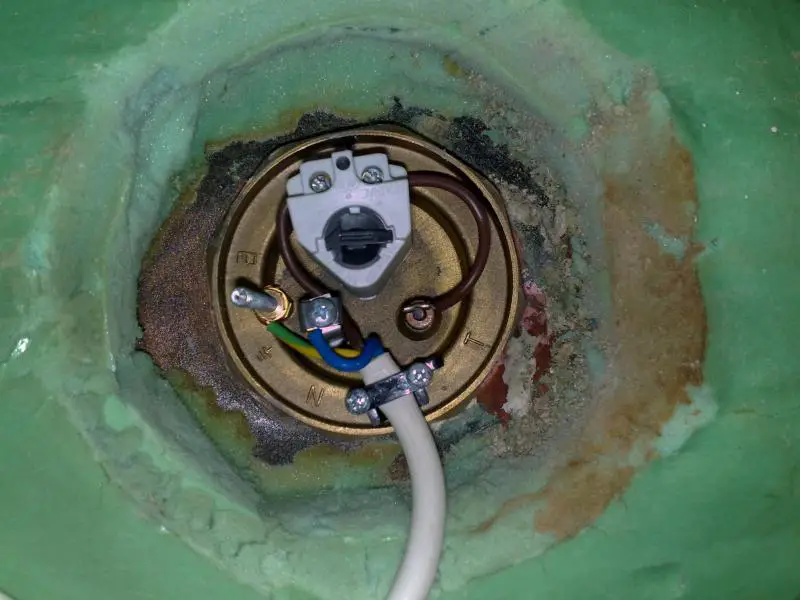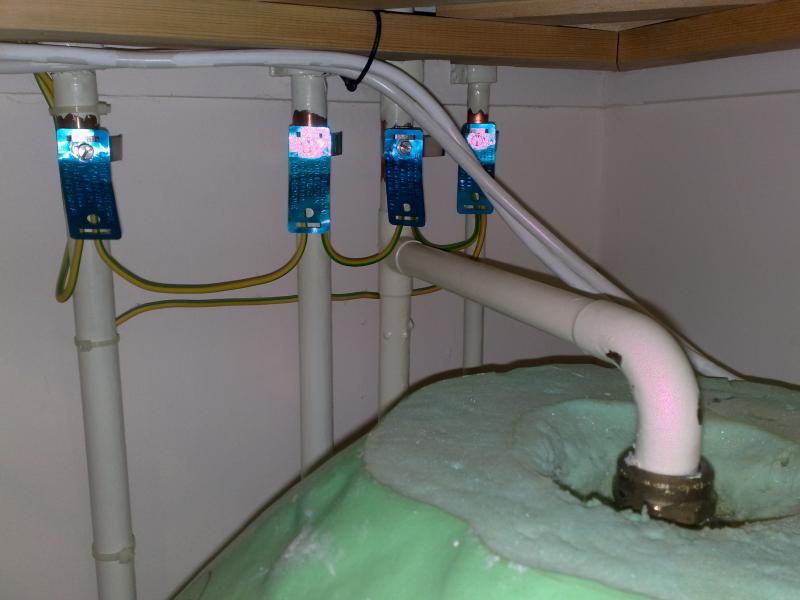BACKGROUND:
I have an electric cylinder boiler, which is in my airing cupboard, and heats the water for my taps only, as I do not have central heating.
The boiler comes on periodically in the early hours of the morning, when my Economy 7 night-time rate kicks in. It does not come on during the day unless I switch it on myself (say, to have a bath).
A couple of weeks ago, I noticed that the boiler seemed a lot noiser during the night. It was still working correctly, as my water was hot and plentiful, but the noise (which sounded like a very loud kettle) was getting a bit distracting.
So I got a plumber in, who swiftly diagnosed that the immersion heater was on it's last legs, and fit a new one. They got everything going again, and things were seemingly back to normal.
THE CURRENT PROBLEM:
However, whereas my previous immersion heater used to come on for about an hour (as soon as Economy 7 kicked in) and then would be pretty silent for the rest of the night, this new one kicks in at the same time, but continually switches on and off, presumably as it reaches temperature.
This is quite intermittent and it will switch off for a few minutes, then on for a few minutes, then maybe off for a few seconds, then on, etc. I'm not sure how long this goes on for, but I have woken in the middle of the night to find it doing this.
Also, whilst not as noisy as the original immersion heater when it began to break down, this new immersion heater still seems pretty noisy when heating the water. I daresay this could be me being oversensitive to the noise now though!
SUMMARY:
Now it could be that this is normal behaviour, but my problem is that I'm not experienced enough to know what is normal! I'm sorry this has been such a long query, but to summarise:
1. How frequently should the immersion heater be firing and how long should it stay on for?
2. How come the behaviour of the new one is different from my old, admittedly worn out, immersion heater? Is this new behaviour more efficient?
3. How noisy should an immersion heater be?
I have an electric cylinder boiler, which is in my airing cupboard, and heats the water for my taps only, as I do not have central heating.
The boiler comes on periodically in the early hours of the morning, when my Economy 7 night-time rate kicks in. It does not come on during the day unless I switch it on myself (say, to have a bath).
A couple of weeks ago, I noticed that the boiler seemed a lot noiser during the night. It was still working correctly, as my water was hot and plentiful, but the noise (which sounded like a very loud kettle) was getting a bit distracting.
So I got a plumber in, who swiftly diagnosed that the immersion heater was on it's last legs, and fit a new one. They got everything going again, and things were seemingly back to normal.
THE CURRENT PROBLEM:
However, whereas my previous immersion heater used to come on for about an hour (as soon as Economy 7 kicked in) and then would be pretty silent for the rest of the night, this new one kicks in at the same time, but continually switches on and off, presumably as it reaches temperature.
This is quite intermittent and it will switch off for a few minutes, then on for a few minutes, then maybe off for a few seconds, then on, etc. I'm not sure how long this goes on for, but I have woken in the middle of the night to find it doing this.
Also, whilst not as noisy as the original immersion heater when it began to break down, this new immersion heater still seems pretty noisy when heating the water. I daresay this could be me being oversensitive to the noise now though!
SUMMARY:
Now it could be that this is normal behaviour, but my problem is that I'm not experienced enough to know what is normal! I'm sorry this has been such a long query, but to summarise:
1. How frequently should the immersion heater be firing and how long should it stay on for?
2. How come the behaviour of the new one is different from my old, admittedly worn out, immersion heater? Is this new behaviour more efficient?
3. How noisy should an immersion heater be?








